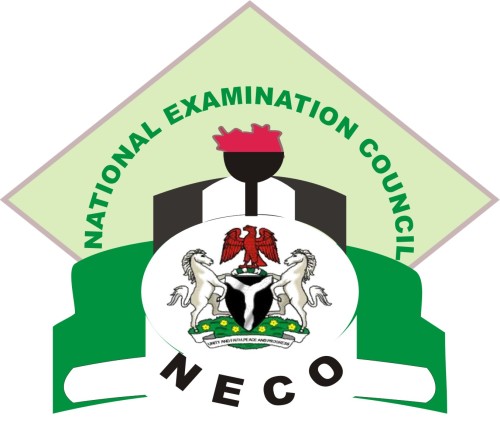GEOGRAPHY NECO 2020 OBJ AND PRACTICAL/PHYSICAL QUESTIONS AND ANSWERS
NECO-GEOGRAPHY-ANSWERS
Geo-Obj!
1ACAACCABBE
11AAACDDCCEA
21ECBECAECDD
31BAAEECBCDD
41CCBDBAADDB
51EEBCEDBBBD
====================================
You Are To Answer Question One(1) And Any Other Three (3) Questions.
THEORY-ANSWERS
(1ai)
Relief; the relief of the mapped area (kashimbila N.W) can be described as follows
(i)A dissected plateaus is found of the north central area of the map which extended to the Central area.
(ii)The eastern , western and southern areas of the mapped area are mainly lowlands with the lowest height of 500m above see level
(1aii)
Drainage pattern; this can be described in the the following ways
(i)the main river is the katsina ala given and other minor ones that empty their water into it e;g mku,agbadi,apipo,abagu,kangi, etc . The direction of flow of river katsina – Ala is from north-west to south – east on the map .
(ii)the drainage pattern of the mapped area is dendritic.
(1aiii)
Settlement; the settlement pattern of the mapped area is displeased on scalloped settlement. That is the building are far from each other with few social amenities.
(1b)
The development of given katsina – ala in these stages there are the youthful and matured and old age stages.
The youthful stage mark the source of river katsina – ala at bamenda highlands with a V-shape valley. The matured stage of the rivers is characterized by meanders and U-shape valley. The old stage leads to the mouth of given katsina – ala (I;e when it empties its water to river benue)
The reasons for the above cycles of development of given katsina – ala are;
(i)Vertical erosion at the youthful stage
(ii)Lateral erosion and transportation at the matured stage
(iii)Deposition of materials at the old age stage.
=====================================
(2a)
(i)changing of the seasons not same temperature in different parts of the Earth
(ii)change of the length of the Day and Night during the year
(iii)change of the position of the midday sun and night during the year and in the different parts of the Earth
(iv)Change of the lunar eclipse and marking of the year.
(2bi)
(i)Equinox refers to a day with an equal duration of day and night. We have two equinoxes in a year which are:
-Spring equinox on March 20
-Autumnal equinox on September 22
-Examples-
(i)It could be spring or autumnal.
(ii)It is equal lengths of day and night
(iii)the days and nights are equal
(2bii)
Solstice is refers to a day with either the longest day or the shortest. The two solstices in a year are:
-Winter solstice on December 22
-Summer solstice on June 21
-Examples-
(i)It could be summer or winter
(ii)It is unequal length of day and night
(iii)The days are longer in summer and shorter in winter.
(2c)
(i)Because the changes in hours of daylight and in temperature caused by
revolution and tilt lead to the yearly change of seasons at middle latitudes. If Earth’s axis were perpendicular to its plane of orbit, seasons would not
occur. In addition, every place on Earth’s surface would experience 12 hours
of daylight and 12 hours of darkness every day. On the other hand, if Earth’s
axis were tilted more than 23.5°, each hemisphere would experience hotter
summers and colder winters.
(ii)Because On the first day of summer, every point on Earth within 23.5° of the
North Pole experiences 24 hours of daylight. The boundary of this region,
at latitude 66.5° N, is the Arctic Circle. On June 21 in the Southern
Hemisphere, every point south of the Antarctic Circle (latitude 66.5° S )
experiences 24 hours of darkness.
(iii)Because The hemisphere tilted toward the sun receives more direct sunlight and
thus has warmer temperatures and longer days. The hemisphere tilted
away from the sun receives indirect sunlight. That hemisphere has cooler
temperatures and shorter days. In other words it changes the summer to be warm and bright and also changes it to be Winter.
=====================================
(7a)
Environmental conservation is the practice of us humans saving the environment from the loss of species, and the destruction of the ecosystem, primarily due to pollution and human activities.
(7b)
(i)Water
(ii)oil
(iii)coal
(iv)iron
(7c)
(i)Recycling; This is a process by which the life of resource is extended by means of recycling it or reusing it as an input or output. This is applicable only to on-energy resources, since the use of a material as an energy resource results in its useless dissipation into the atmosphere. In other words Reprocessing of unwanted products (e.g. newspapers, scrap metals, glass and sewage etc.).
(ii)Waste Reduction; waste reduction, it will automatically ensure lesser exploitation of resources. Waste reduction can be achieved by appropriately redesigning industrial processes, so that there will be technological efficiency in utilizing the resource and avoidance of waste to the minimum. In other words Further, the waste of one industry can be used as the raw material of another industry.
(iii)Material Substitution: the use of a material resource can be restricted by finding an alternative resource. The problem in this is that many materials have extensive uses and also joint uses. In other words the copper sheet can be substituted by aluminium, which at the same time would reduce demand for soldering agents made from and lead. Aluminium is being extensively substituted for tin, particularly, in the production of metal cans and containers.
(iv)Rewilding; Allowing areas to restore themselves naturally without interference by humans (except possible species reintroduction)
=====================================
(8a)
(i)Location; The spatial location of features are defined by coordinates in a specific reference system. In other words they are represented by points, lines or polygons and geometry of the three dimensional representation in space.
(ii)Data Quality; it refers to the credibility and accuracy of the data or more generally how good the data is. In other words quantitative quality relates to measurable components such as spatial accuracy. And the qualitative quality consists of those non-measured components, which usually relates to the entire data set and not to specific objects.
(iii)Generalization; relates to the level of scale and details associated with the object. Objects may be aggregated from larger to lower scale, while the opposite process is very limited. For example, if the countries layer can be aggregated into a states layer but opposite cannot be accomplished without external data.
(iv)Entity versus field based data; The world can be represented as a set of discrete entities such as forests, rivers, roads and buildings.This is refereed to as the Entity based approach. In other words the field-based approach represents the world as a continuous function with attributes that vary in space. Natural phenomena such as air pollution distribution and terrain may be the best represented using this approach.
(8b)
Tabulate.
-Advantage-
(i)It has the ability of improving the organizational integration. GIS would then integrate software, hardware and also data in order to capture, analyse, manage and so display all forms of information being geographically referenced.
(ii)GIS would also allow viewing, questioning, understanding, visualizing and interpreting the data into numbers of ways which will reveal relationships, trends and patterns in the form of globes, maps, charts and reports.
-Disadvantage-
(i)GIS technology might be considered as expensive software.
(ii)It as well requires enormous data inputs amount that are needed to be practical for some other tasks and so the more data that is to put in.
================



